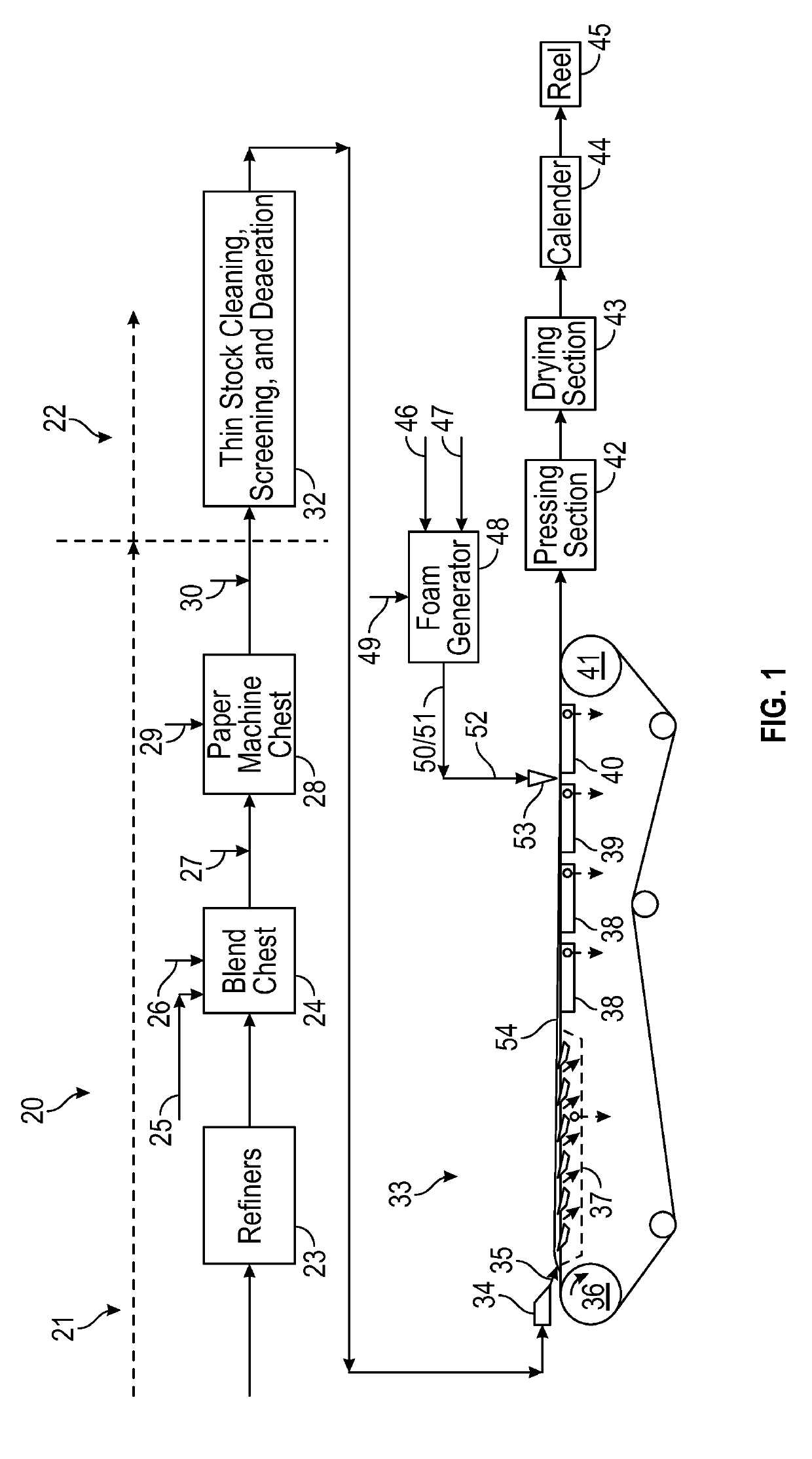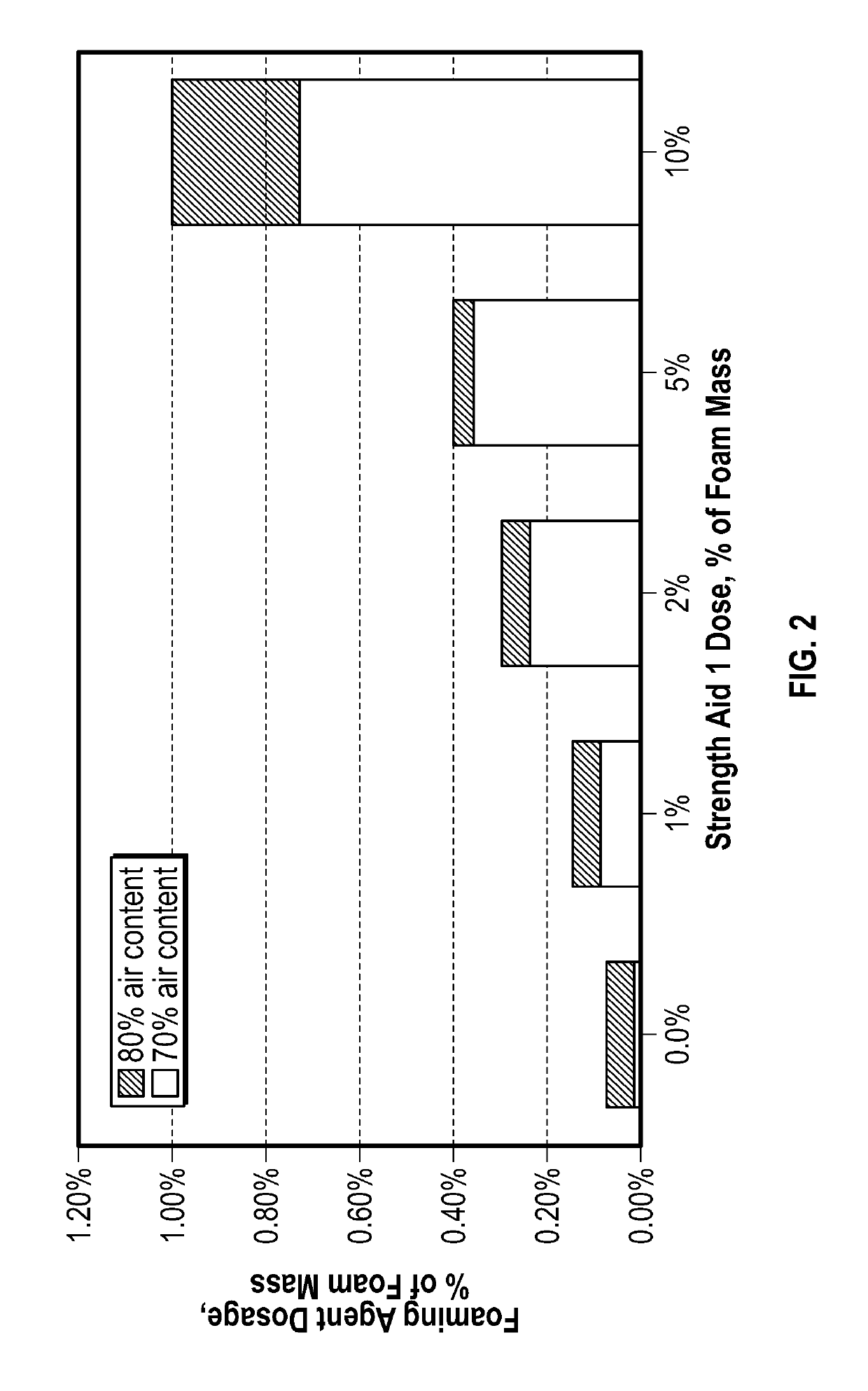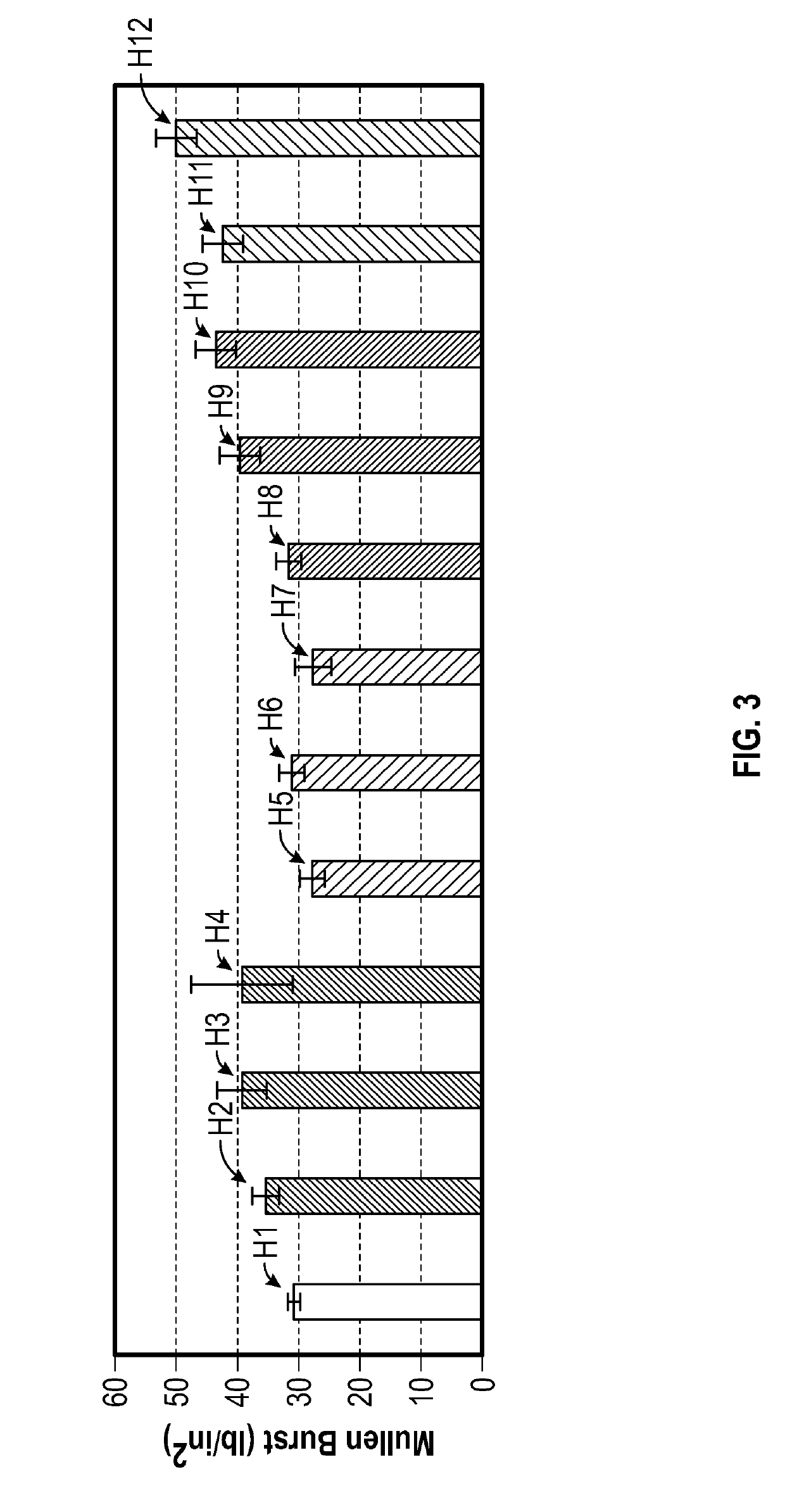Foam assisted application of strength additives to paper products
a technology of strength additives and foaming agents, which is applied in the directions of non-fibrous pulp addition, packaging paper, transportation and packaging, etc., can solve the problem of substantially minimal concentration of at least one foaming agent in the foaming formulation
- Summary
- Abstract
- Description
- Claims
- Application Information
AI Technical Summary
Benefits of technology
Problems solved by technology
Method used
Image
Examples
example 1a
[0076]Handsheets of about 100 grams per square meter (“gsm”) were produced using 500 Canadian standard freeness (CSF) recycled linerboard (RLB) pulp to test the strength improvements for foam additive addition of synthetic strength additives as compared to a control sheet. The wet formed webs were produced using Noble and Wood handsheet equipment and using standard procedures. There was no white water recycle used in the production of the handsheets. The formed wet sheets were then transferred to a foam application device that allowed for the application of a vacuum to the wet sheets. Foams were prepared using solutions of 2%-10% of a synthetic cationic strength additive (commercially available as Solenis LLC dry strength additive Hercobond™ 7700 (the percentage values being the weight percent of product in the foaming formulation). Several foams were formed using air as the gas in the presence of various foaming agents, including Macat® AO-12, Triton™ BG-10, and a polyvinyl alcohol...
example 1b
[0084]To confirm the results in Example 1A, the same experimental trial was performed using handsheets that were produced using 340 Canadian standard freeness (CSF) recycled linerboard pulp. Foams were prepared in accordance with the foam formation described in Example 1A. The results of Example 1B are shown in FIG. 4. The handsheets evaluated in FIG. 4 are described below in Table II.
TABLE IICharge ofAmount ofFoaming AgentFoamingSynthetic StrengthHandsheetUtilizedAgentAdditive IHandsheet 13———(Comparative)Handsheet 14ExemplaryAmphoteric2 wt. %(Exemplary)Foaming Agent IHandsheet 15ExemplaryAmphoteric5 wt. %(Exemplary)Foaming Agent IHandsheet 16ExemplaryAmphoteric10 wt. % (Exemplary)Foaming Agent IHandsheet 17ComparativeAnionic2 wt. %(Comparative)Foaming Agent IHandsheet 18ComparativeAnionic5 wt. %(Comparative)Foaming Agent IHandsheet 19ComparativeAnionic10 wt. % (Comparative)Foaming Agent IHandsheet 20ExemplaryNon-ionic2 wt. %(Exemplary)Foaming Agent IIHandsheet 21ExemplaryNon-ionic...
example 1c
[0087]Handsheets of about 100 gsm were produced using recycled linerboard pulp using handsheets that were produced using 370 CSF recycled linerboard pulp. The wet formed sheets were produced using Noble and Wood handsheet equipment using standard procedures and with no white water recycle. Foams prepared using a 1% cationic synthetic strength additive (commercially available as Hercobond™ 7700), as product weight in a foaming formulation, were formed with various foaming agents prior to applying onto a wet formed sheet. The foaming agents used in this example include Triton™ BG-10, Glucopon® 425N, Crodateric™ CAS 50, Selvol™ 540, Multitrope™ 1620, Macat® AO-12, NatSurf™ 265, Triton™ X-100, Mona™ AT-1200, Tween® 80, Tween® 20, Crodasinic™ LS30, Diversaclean™, and Forestall™. The foams were prepared in accordance with the foam formation described in Example 1A. The dry and wet (rewetted) tensile strengths of each of the foaming agents were then tested and compared to the dry and wet (...
PUM
| Property | Measurement | Unit |
|---|---|---|
| viscosity | aaaaa | aaaaa |
| viscosity | aaaaa | aaaaa |
| water content | aaaaa | aaaaa |
Abstract
Description
Claims
Application Information
 Login to View More
Login to View More - R&D
- Intellectual Property
- Life Sciences
- Materials
- Tech Scout
- Unparalleled Data Quality
- Higher Quality Content
- 60% Fewer Hallucinations
Browse by: Latest US Patents, China's latest patents, Technical Efficacy Thesaurus, Application Domain, Technology Topic, Popular Technical Reports.
© 2025 PatSnap. All rights reserved.Legal|Privacy policy|Modern Slavery Act Transparency Statement|Sitemap|About US| Contact US: help@patsnap.com



